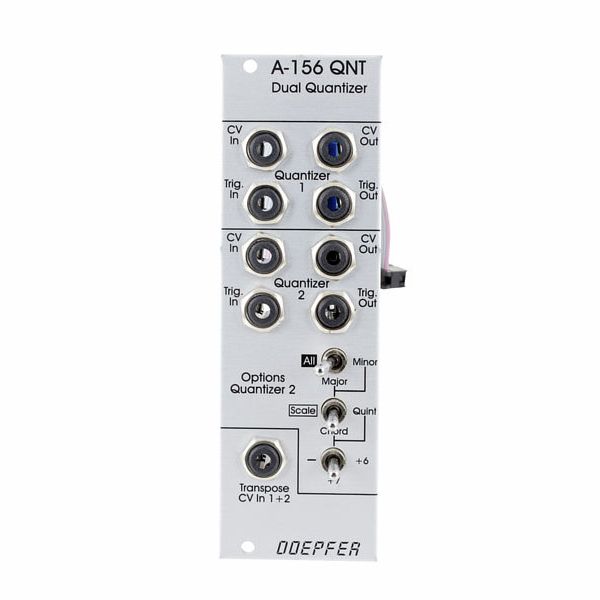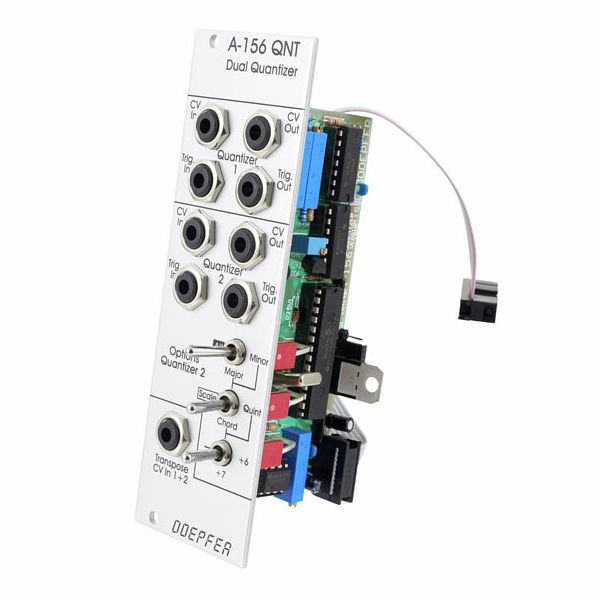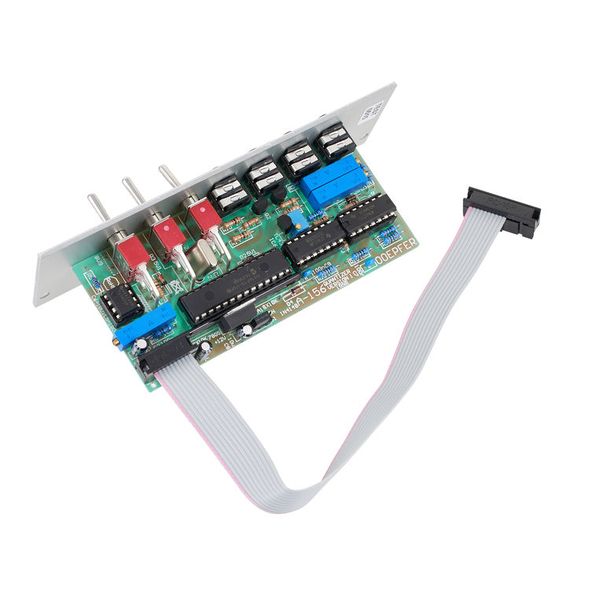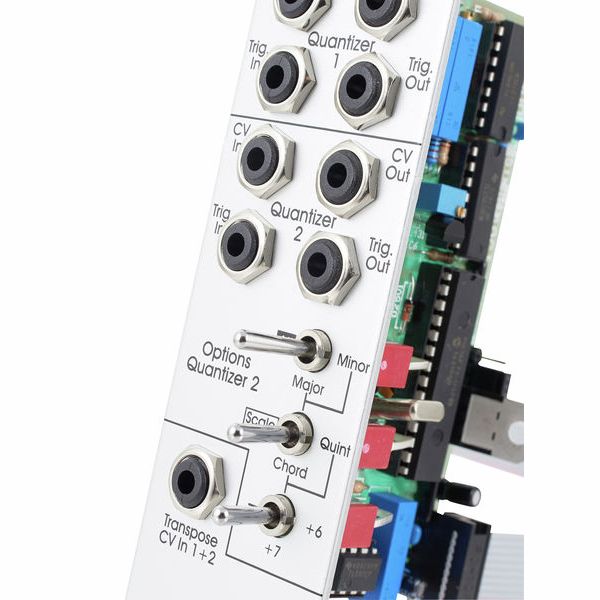Dual Quantiser
The A-156 Module is a dual control voltage quantiser. A quantiser converts a continuous input control voltage in the range of 0 ... 10V into a stepped output voltage in the same voltage range. The possible steps in the A-156 are not restricted to the usual half-tone grid (ie gradation in 1 / 12V steps) but also allows other scales of the grid such as the major scale, minor scale, major chord , Minor chord, fundamental fifth and the inclusion of sixth or seventh in the chords. The voltage values at the input are only converted into discrete voltages at the output, which meet the selection criterion for the permissible voltage grid (for example a minor seventh chord). The operating mode for Quantiser 1 is set with 3 tilt switches with center position. The Quantiser 2 is fixed to the half-tone grid.
For each of the two Quantisers there is a control input (CV In), a control output (CV Out), a trigger input (trig in) and a trigger output (trig. Out). If no signal is present at the trigger input (socket open), the quantisation is carried out continuously. If, however, a square-wave signal is applied there (from an LFO or the MIDI-SYNC interface for example), the quantisation is always performed only at the rising edge of the trigger signal. The quantisation process can thus be synchronised with other processes on demand. At the trigger output, a pulse appears whenever a quantisation (or a step change in the output voltage) occurs. For example, an envelope generator (ADSR) can be started.
In addition, the module has a common transpose input, which can be added to both quantisers and is quantised in a halftone grid. A typical application for this is to transpose a quantized sequence (generated by the A-155) with a second control voltage (from the MIDI CV interface for the example).
- Quantisation of a tone sequence from the A-155 into a fixed grid (halftones, only major scale, minor scale only)
- Quantise the control voltage of a Trautonium manual A-198, Theremin A-178 or Light-to-CV module A-179 to get always half-tones, scales, or chord sounds
- Arpeggio-like sound sequences with LFO, Random, Noise, ADSR etc. as input voltage
Euro Rack Module
- Bi-directional control voltage quantiser
- Converts continuous input voltage into step output voltage
- Euro rack format
- Width: 8 HP
- Depth: 55 mm
- Power consumption: +50 mA (+ 12V)/ -10 mA (-12V)











